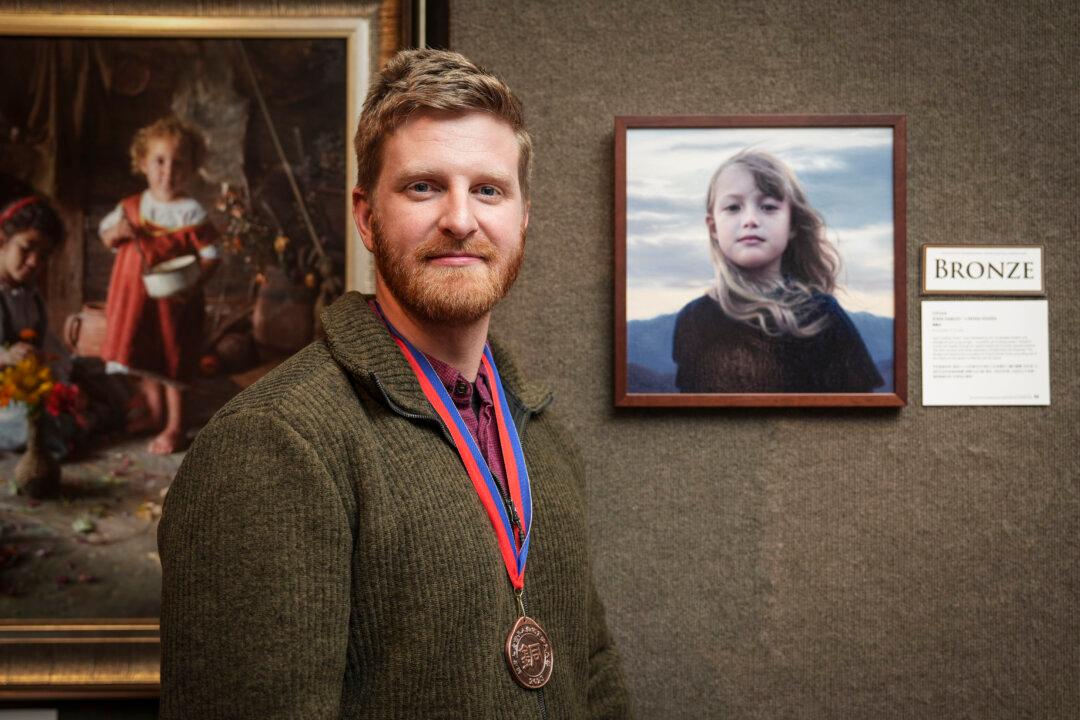Utah-based figure painter John Darley loves painting people of the American West. Through sheer hard work, dedication, and love for his family, he’s created a career as an artist that he’s determined to master.
Mr. Darley’s work has won awards of excellence from the Portrait Society of America, the Art Renewal Center, Southwest Art magazine, and the NTD International Figure Painting Competition, the latter of which recently awarded him a bronze award for his oil painting “Vivian.”






